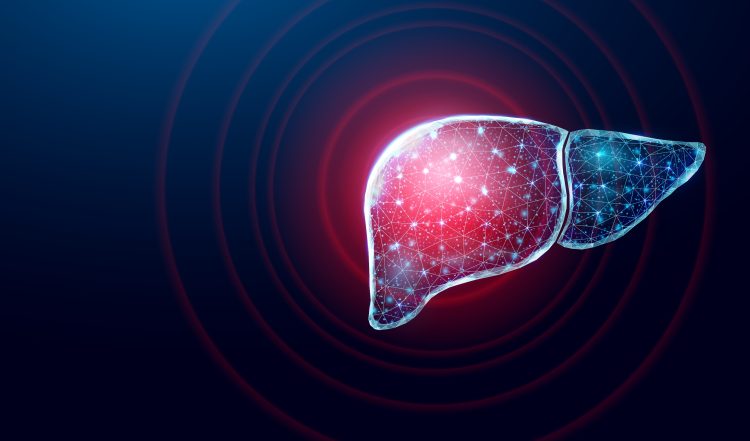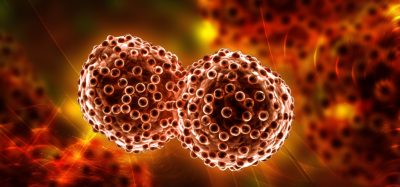Tracing ACLY from cardiovascular target to liver therapy lead
Posted: 6 August 2025 | Drug Target Review | No comments yet
Can a cholesterol enzyme help treat an untreatable liver disease? Esperion’s ACLY programme is using multiomic and preclinical data to evaluate its potential in primary sclerosing cholangitis.


ATP citrate lyase (ACLY) is a central enzyme in metabolism, best known for its role in cholesterol and fatty acid synthesis. A validated target in cardiovascular disease, new research from Esperion Therapeutics suggests that ACLY could also play a role in liver disease – specifically, primary sclerosing cholangitis (PSC).
PSC is a rare, chronic cholestatic liver disorder with no approved treatments. Its aetiology remains unclear but is characterised by ongoing inflammation and fibrosis of the bile ducts, often progressing to liver failure. With limited therapeutic targets and high unmet need, PSC remains one of the most challenging conditions in hepatology.
Using large-scale genetic data, multiomic analysis and targeted preclinical studies, the team at Esperion is building a case for ACLY inhibition in PSC. The approach could offer a new angle on a disease that has thus far resisted most conventional drug development strategies.
At Esperion Therapeutics, the link between ACLY and liver disease did not emerge by chance. It was the result of a deliberate, data-driven investigation that began with established cholesterol biology and led into entirely new therapeutic territory.
“It’s been like a detective story,” says Stephen Pinkosky, Vice President of Drug Discovery and Early Development at Esperion. As with many such investigations, it began with a familiar target – ACLY – showing unexpected behaviour in a different disease.


Liver injury and immune activation are key features of primary sclerosing cholangitis (PSC) and central to ACLY’s role in disease progression. Image credit: Vector_Leart / Shutterstock
From heart disease to liver inflammation
ACLY sits at the crossroads of sugar and fat metabolism, converting citrate into acetyl-CoA – a critical building block for lipid synthesis. Inhibiting ACLY has been shown to reduce LDL cholesterol (LDL-C) and lower cardiovascular risk. Esperion’s approved therapies are already based on this mechanism.
Earlier work made clear that ACLY played a key role in cholesterol metabolism in a specific cell type in the liver.
Yet something new was starting to surface. “Earlier work made clear that ACLY played a key role in cholesterol metabolism in a specific cell type in the liver,” Pinkosky explains. “Emerging evidence was indicating that the role of ACLY might be much broader but knowing where to focus was challenging.”
Rather than being confined to hepatocytes or lipid levels, dysregulated ACLY activity appeared to contribute to immune dysfunction, inflammation and fibrosis – all central to PSC.
Follow the data
How did a programme focused on cardiovascular metabolism come to uncover a potential role for ACLY in a complex liver disease like PSC?
“Working with our collaborator, we found that ACLY is causally associated with multiple clinical liver outcomes in a very broad population,” says Pinkosky. The insight came through phenome-wide association studies (PheWAS), which combine large genomic datasets with clinical outcomes to identify statistically significant genetic associations.
We found that ACLY is causally associated with multiple clinical liver outcomes in a very broad population.
However, associations alone were not sufficient. To justify moving into a new disease area, the biology had to be traced from gene variant to disease process.
“Mechanistic investigations by our team and others had begun to support a role of ACLY in liver immune cells, inflammatory cells and fibroblasts. But rather than increasing LDL-C, ACLY dysregulation contributes to inflammation, fibrosis and immune dysfunction.”
Esperion needed more than correlation. They needed a detailed map of how ACLY interacted with liver disease processes.
Building a liver disease network from scratch
“No single existing dataset captures the complexity of liver disease well enough, so we built our own multilayer network using several multiomic datasets from patients with a common form of liver disease,” Pinkosky explains.
By integrating transcriptomic, proteomic and other multiomic data – and applying machine learning and AI – the team developed a systems-level model of liver disease. This approach allowed them not only to identify disrupted pathways, but also to understand how those pathways interact and contribute to disease progression.
“Creating a rank order of liver diseases in which ACLY could be important, we found that both chronic and immune forms of cholangitis were at the top,” he says.
PSC stood out immediately – both for its biology and the urgent unmet clinical need.
Designing drugs for a disease without a known cause
Esperion then began screening ACLY inhibitors for activity relevant to PSC. However, this was far from a typical hit-to-lead process, as the disease has no clear cause or universal biomarker, so it’s unclear which endpoints to prioritise.
The cause of PSC is unknown, making it difficult to determine which drug effects to prioritise during discovery and optimisation.
“The cause of PSC is unknown, making it difficult to determine which drug effects to prioritise during discovery and optimisation,” says Pinkosky.
Rather than seeking a single causal mechanism, the team concentrated on addressing the downstream biological consequences. “Those datasets helped us to identify novel ACLY pathways that are dysregulated in patients with a common form of liver disease, but also relevant to PSC.”
Esperion’s compound screens were specifically designed to measure how candidates affected immune, inflammatory and fibrotic signalling. “We then built tests into our screening cascade that allowed us to design and validate compounds that appeared to improve the dysregulation in those pathways,” he says.
The models that matter
Even with compelling computational data and validated targets, demonstration of preclinical efficacy in biological systems was still required.
“Even though we had significant evidence from human genetics and multiomics that ACLY was a good target for liver disease, we still need to conduct interventional preclinical studies to test whether our inhibitors actually do what we designed them to do.”
Even though we had significant evidence from human genetics and multiomics that ACLY was a good target for liver disease, we still need to conduct interventional preclinical studies to test whether our inhibitors actually do what we designed them to do.
“No single model captures all of the complicated processes that lead to liver disease in humans,” Pinkosky says. “So, we needed to use multiple models and understand the strengths and weaknesses of each when testing our potential drug candidates.”
In vivo studies showed reductions in inflammation, fibrosis and liver injury – key hallmarks of PSC. Equally encouraging were results from 3D human liver microtissues, which more closely reflect human disease.
“The human microtissue approach gave us confidence that these effects will be relevant in humans. This ability to address the injury, as well as the resulting inflammation and fibrosis, makes us optimistic about our findings,” Pinkosky asserts.
Not just a target
For Esperion, the ACLY programme is not only about targeting a single enzyme. It is about creating a discovery framework that integrates population-scale genetic data, computational modelling and translational biology to reduce the risks of early-stage development.
“What excites me about PheWAS and multiomics is that they can help to bridge the gap between preclinical models and patients,” reveals Pinkosky.
One key resource was the UK BioBank – a dataset of genomic and phenotypic information from over 500,000 individuals. “Applying PheWAS to that data revealed consistent associations of genetically predicted ACLY inhibition with significant reductions in the risk of liver disorders.
“Multiomics analyses took us even further, helping to validate existing disease pathways and identify new ones rather than hoping that preclinical models alone would get it right.”
“A unique game-changer”
If ACLY inhibition can successfully reduce inflammation, fibrosis and immune dysregulation in PSC, it may offer a fundamentally new approach to treating the disease.
“Complex diseases such as PSC almost invariably require multifaceted treatments, which is what we believe sets us apart,” says Pinkosky.
“By targeting ACLY – one pathway – we hope to achieve multiple cell-specific effects. Potentially, this will enable our drug candidate to address both the injury component of PSC and the resulting immune, inflammatory and fibrotic responses.
“In plain English, our goal is to stop the damage and to keep it from recurring: a unique game-changer.”
What comes next
Before clinical trials can begin, Esperion will complete a series of regulated preclinical safety studies and continue refining its understanding of ACLY’s role in PSC. The team is also focused on developing robust biomarkers to measure ACLY inhibition and its downstream effects in future trials.
“Our Esperion team is also focused on discovering and developing biomarkers, which will help us understand how well the drug is inhibiting ACLY in future clinical studies and whether it is having the expected downstream effects on PSC.
“There is much work left to be done,” says Pinkosky, “but we’re quite optimistic about where this effort will lead.”


Stephen Pinkosky, PhD, has served as Vice President of Drug Discovery and Development at Esperion since August 2024. Prior to assuming his current role, Dr Pinkosky held positions of increasing responsibility at the company, which he joined in 2008. Before joining Esperion, he worked as a Scientist in the Research and Development Department at Aastrom Biosciences, Inc., a Scientist in Vascular Biology at Esperion Therapeutics, a Pfizer Inc. company, and as an Associate Scientist in Inflammation Pharmacology at Pfizer Global Research and Development.
With more than 20 years’ experience in the pharmaceutical industry, Dr Pinkosky specialises in the strategic leadership of innovative drug discovery programmes through IND. He has a proven track record of successfully managing cross-functional teams, optimising research pipelines, and fostering collaboration between R&D, clinical, and commercial operations to deliver high-quality therapeutic solutions.
Dr Pinkosky holds a PhD in Nutrition and Metabolism from the School of Medicine at McMaster University in Canada and a Master of Science degree in Molecular, Cellular and Developmental Biology from the University of Michigan.
Related topics
Analysis, Artificial Intelligence, Assays, Biomarkers, Drug Discovery Processes, Enzymes, Genetic Analysis, Genomics, Proteomics
Related conditions
Cardiovascular disease, liver failure, Primary Sclerosing Cholangitis (PSC)
Related organisations
Esperion Therapeutics








